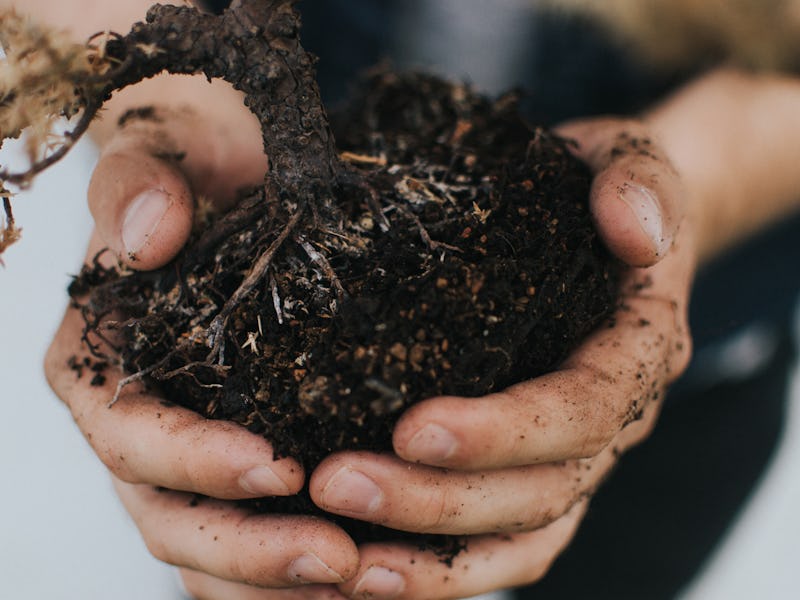In Washington, Composting Humans Is Now a Legal Alternative to Cremation
One human equals two wheelbarrows' worth of soil.

The damage we inflict on the environment doesn’t end when we die. Traditional burials, the kind with a coffin, take up land, use up precious materials, and seep embalming chemicals into the soil. Cremation, meanwhile, requires two SUV tanks worth of fuel and shoots carbon dioxide into the atmosphere. In an effort to die in a greener way, the people of Washington have newly legalized a different sort of afterlife, where bodies become compost.
On Thursday, governor and presidential hopeful Jay Inslee signed SB 5001, a bill that legalizes “natural organic reduction” of human remains. This makes Washington the first state to legalize a burial method called recomposition, which is essentially an accelerated form of composting. Only instead of a banana peel, what’s being composted is a human body.
The law will take effect May 1, 2020 and is a sign of the state’s dedication to environmentalism. This date also aligns with another scheduled step for 2020: The world’s first public recomposition facility. It will be operated by a public-benefit corporation called Recompose, whose founder Katrina Spade first conceptualized the recomposition process in 2012.
The process, Recompose asserts, “gently converts human remains into soil.” The transformation will all happen within reusable, hexagonal recomposition vessels, seen below in an artist rendition. What happens is that an un-embalmed person, wrapped in a shroud, is put within one of these vessels alongside organic materials like wood chips, alfalfa, and straw. As the body decomposes, and the process of composting does its job, air is periodically pulled into the vessel, accelerating microbial activity. Microbes, in turn, naturally generate up to 131 °F worth of heat, killing any pathogens.
An artist's vision for a future recompose facility.
The process was inspired by the practice of composting livestock and has been used already on six deceased people who donated their bodies to research. The experiment was a success, breaking the bodies down to the natural elements of nitrogen, amino acids, and phosphorous.
In a 2018 interview with the Seattle Times, Recompose research advisor Lynne Carpenter-Boggs, Ph.D., said that at the end of the 30-day-long process, the bodies had turned into “a beautiful compost-like material I would have been happy to take home and use in the gardens.”
In the end, the process turns one person into about a cubic yard of soil, enough to fill two large wheelbarrows. It remains to be seen what a person’s family can do with their new soil, as in Washington, the laws that govern the scattering of human remains will apply to the use of human compost. According to the Associated Press, this means that relatives can keep the soil and in turn, spread the soil on public lands where scattering is allowed, and use it to plant on private property.
But burial regulations vary by state, so recomposition’s progress as a trend will depend on those laws. For now, what is clear is that this is one of the most environmentally conscious choices a person can make for their remains.
“Recompose gets as close to the natural process of decomposition [as] you’d assume a body would undergo before we had an industrialized society,” Environmental Protection Agency postdoctoral fellow and Recompose advisor Troy Hottle told the Seattle Times. “In an urban environment, which is where the global population is growing and land use is at a premium, it’s the most efficient and environmentally sound method of burial.”